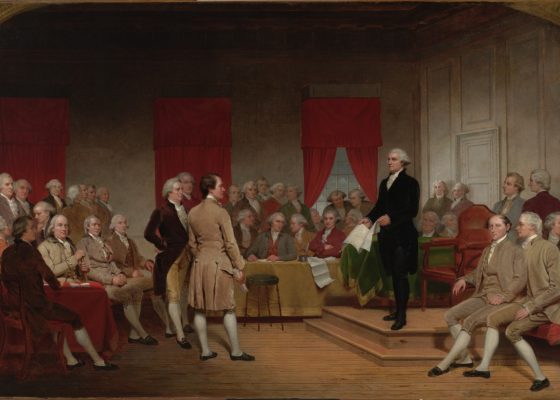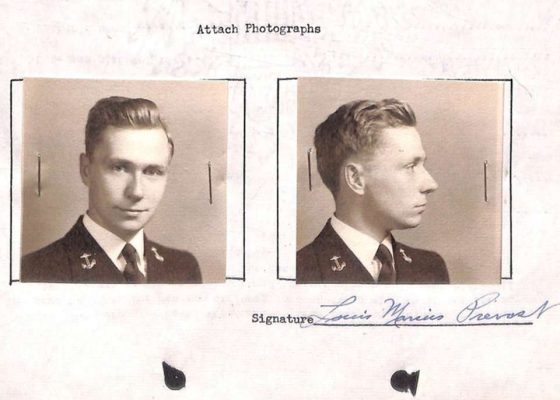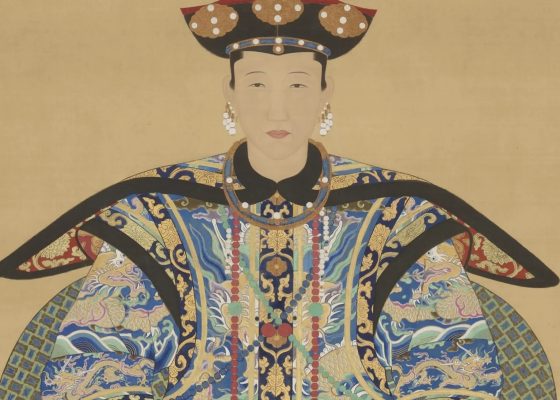
By Tim Gebhart
In ancient Greek legend, it was Promethius who molded humankind out of clay. After he gave humanity the gift of life, he bestowed upon them fire, from fire he gave them the arts. In ancient Greek civilization up to the classical era (500 – 323 B.C.), the main purpose of a person’s life was to align themselves with what they saw as cosmic law and the transcendental principles of Truth, Beauty, and Goodness their Gods possessed and bestowed upon them at the outset of humankind’s creation. These principles made up life and all things. They were virtues and actions one would try to manifest to achieve a perfect harmony, what the ancient Greeks called arete, which means to fulfill one’s highest potential, to reach physical and moral perfection, manifesting a divine state as the Gods that made them.
In ancient Greece, we see unlike any other civilization at the time, the perfect sculpting and portrayal of the human body. It was through this body we have that perfection could be achieved. It was this reason that the human body had been so carefully and accurately depicted, to showcase their ideals and ultimate pursuits in life. Like their architecture which sought to pull the divine into the human realm, the Greeks wanted to transcend back into divinity. The sculpture of ancient Greece and its arts were not crafted or used specifically to portray Greek identity, it was a symptom of their beliefs, rather than a cause.
“From the deepest desires often come the deadliest hate.”
~ Socrates
Many Greek sculptures in the classical era highlighted and displayed and manifested what they called Sophrosyne. The ideal of Sophrosyne is an ancient Greek concept of an ideal of virtuosity of character and soundness of mind which leads to the development of temperance, moderation, prudence, purity, and self-control. A person on this path would become balanced in temperament, walking the “golden mean” as Aristotle put it, to not go to excess in any way, lest virtue then become a vice. A person was to control and temper their passions and emotions.
In Greek legend, philosophies, beliefs, and how to live and view life were passed down onto them by the Gods through their sages or by inspiration. Gods during the classical era were portrayed as progenitors of wisdom to humanity with a sense of calm and compassion.
Parmenides, the founder of Western metaphysics relayed the wisdom that had been shown to him by a goddess in his one surviving poem On Nature. In his poem, Parmenides relayed that thought and being are one and the same. If a person likewise is overcome with emotion, they become what they are feeling at that moment. It is not separate from who they are.
In classical sculpture, we see the careful and deliberate exclusion of intense emotion and passions, but rather the restraint of them. In an example, the Statue of a young athlete, (The Westmacott Athlete) thought to have been carved by Polykleitos, one of Greece’s most renowned sculptors, we see the young man after a victory not soaking in adoration from the crowd, but showing humility and modesty by looking away and down. His expression shows no sign of basking in the glory of the moment, but of being calm, centered, and in control of his emotions. When we are in the presence of sculptures embodying these principles of moral restraint, it invites the viewer to do the same.
During the Hellenistic era in Greece (323 – 146 B.C.) which began directly after the death of Alexander the Great, we see a dramatic shift. The sculptures of this period such as the “Laocoön and His Sons,“ the “Ludovisi Gaul and His Wife,” and many others crafted at the time were drenched in rage, fear, greed, lust, and jealousy. The figures in the Hellenic era were molded with contorted and exaggerated bodies. This shocking 180 degree shift in aesthetic values had to do with not so much a shift in taste at first, but a shift in how the ancient Greeks viewed themselves and emotion as a whole. The impact from this shift in Greek society, though seemingly subtle, had a major ripple effect through all of Greek society, leading from its golden age during the classical era, to its downfall in the Hellenic era.

In the Hellenic era, Greek society as a whole steered away from developing and focusing on internal development and more towards worldly pursuits. Their Gods and spirituality became an afterthought to a new system of beliefs and ideals. Knowledge for power replaced wisdom for attuning to divinity. Emotion was no longer to be tempered, but indulged.
“The easiest and noblest way is not to be crushing others, but to be improving yourselves.”
~ Socrates
Instead of viewing emotions as something to mitigate and control, during the Hellenic era the Greeks sought to indulge in emotion. The Greeks’ stories went from Aesop’s Fables and the moral teachings of Socrates during the Classical era, to later the popular plays of Io, Zeus, and Eros with the Gods being depicted as involving themselves with temperaments worse than humans.
Through the over 3,000 years of Greek civilization, from its height in the Classical era and subsequent decline during the Hellenic period immediately following, we can see a marked difference in how the ancient Greeks in these distinct epochs viewed life and what they valued. The whole of Greek society rose with temperance and started its decline as the earlier wisdom and moral restraint had been abandoned. This in turn affected their arts and sculpture that manifested and displayed their values and beliefs.
Ancient Greek Classical Era Statues (500 – 323 B.C.)


Ancient Greek Hellenic Era Statues (323 – 31 B.C.)










Cancel anytime


Using our website
You may use the The Middle Land website subject to the Terms and Conditions set out on this page. Visit this page regularly to check the latest Terms and Conditions. Access and use of this site constitutes your acceptance of the Terms and Conditions in-force at the time of use.
Intellectual property
Names, images and logos displayed on this site that identify The Middle Land are the intellectual property of New San Cai Inc. Copying any of this material is not permitted without prior written approval from the owner of the relevant intellectual property rights.
Requests for such approval should be directed to the competition committee.
Please provide details of your intended use of the relevant material and include your contact details including name, address, telephone number, fax number and email.
Linking policy
You do not have to ask permission to link directly to pages hosted on this website. However, we do not permit our pages to be loaded directly into frames on your website. Our pages must load into the user’s entire window.
The Middle Land is not responsible for the contents or reliability of any site to which it is hyperlinked and does not necessarily endorse the views expressed within them. Linking to or from this site should not be taken as endorsement of any kind. We cannot guarantee that these links will work all the time and have no control over the availability of the linked pages.
Submissions
All information, data, text, graphics or any other materials whatsoever uploaded or transmitted by you is your sole responsibility. This means that you are entirely responsible for all content you upload, post, email or otherwise transmit to the The Middle Land website.
Virus protection
We make every effort to check and test material at all stages of production. It is always recommended to run an anti-virus program on all material downloaded from the Internet. We cannot accept any responsibility for any loss, disruption or damage to your data or computer system, which may occur while using material derived from this website.
Disclaimer
The website is provided ‘as is’, without any representation or endorsement made, and without warranty of any kind whether express or implied.
Your use of any information or materials on this website is entirely at your own risk, for which we shall not be liable. It is your responsibility to ensure any products, services or information available through this website meet your specific requirements.
We do not warrant the operation of this site will be uninterrupted or error free, that defects will be corrected, or that this site or the server that makes it available are free of viruses or represent the full functionality, accuracy and reliability of the materials. In no event will we be liable for any loss or damage including, without limitation, loss of profits, indirect or consequential loss or damage, or any loss or damages whatsoever arising from the use, or loss of data, arising out of – or in connection with – the use of this website.
Last Updated: September 11, 2024
New San Cai Inc. (hereinafter “The Middle Land,” “we,” “us,” or “our”) owns and operates www.themiddleland.com, its affiliated websites and applications (our “Sites”), and provides related products, services, newsletters, and other offerings (together with the Sites, our “Services”) to art lovers and visitors around the world.
This Privacy Policy (the “Policy”) is intended to provide you with information on how we collect, use, and share your personal data. We process personal data from visitors of our Sites, users of our Services, readers or bloggers (collectively, “you” or “your”). Personal data is any information about you. This Policy also describes your choices regarding use, access, and correction of your personal information.
If after reading this Policy you have additional questions or would like further information, please email at middleland@protonmail.com.
PERSONAL DATA WE COLLECT AND HOW WE USE IT
We collect and process personal data only for lawful reasons, such as our legitimate business interests, your consent, or to fulfill our legal or contractual obligations.
Information You Provide to Us
Most of the information Join Talents collects is provided by you voluntarily while using our Services. We do not request highly sensitive data, such as health or medical information, racial or ethnic origin, political opinions, religious or philosophical beliefs, trade union membership, etc. and we ask that you refrain from sending us any such information.
Here are the types of personal data that you voluntarily provide to us:
As a registered users or customers, you may ask us to review or retrieve emails sent to your business. We will access these emails to provide these services for you.
We use the personal data you provide to us for the following business purposes:
Information Obtained from Third-Party Sources
We collect and publish biographical and other information about users, which we use to promote the articles and our bloggers who use our sites. If you provide personal information about others, or if others give us your information, we will only use that information for the specific reason for which it was provided.
Information We Collect by Automated Means
Log Files
The site uses your IP address to help diagnose server problems, and to administer our website. We use your IP addresses to analyze trends and gather broad demographic information for aggregate use.
Every time you access our Site, some data is temporarily stored and processed in a log file, such as your IP addresses, the browser types, the operating systems, the recalled page, or the date and time of the recall. This data is only evaluated for statistical purposes, such as to help us diagnose problems with our servers, to administer our sites, or to improve our Services.
Do Not Track
Your browser or device may include “Do Not Track” functionality. Our information collection and disclosure practices, and the choices that we provide to customers, will continue to operate as described in this Privacy Policy, whether or not a “Do Not Track” signal is received.
HOW WE SHARE YOUR INFORMATION
We may share your personal data with third parties only in the ways that are described in this Privacy Policy. We do not sell, rent, or lease your personal data to third parties, and We does not transfer your personal data to third parties for their direct marketing purposes.
We may share your personal data with third parties as follows:
There may be other instances where we share your personal data with third parties based on your consent.
HOW WE STORE AND SECURE YOUR INFORMATION
We retain your information for as long as your account is active or as needed to provide you Services. If you wish to cancel your account, please contact us middleland@protonmail.com. We will retain and use your personal data as necessary to comply with legal obligations, resolve disputes, and enforce our agreements.
All you and our data are stored in the server in the United States, we do not sales or transfer your personal data to the third party. All information you provide is stored on a secure server, and we generally accepted industry standards to protect the personal data we process both during transmission and once received.
YOUR RIGHTS/OPT OUT
You may correct, update, amend, delete/remove, or deactivate your account and personal data by making the change on your Blog on www.themiddleland.com or by emailing middleland@protonmail.com. We will respond to your request within a reasonable timeframe.
You may choose to stop receiving Join Talents newsletters or marketing emails at any time by following the unsubscribe instructions included in those communications, or you can email us at middleland@protonmail.com
LINKS TO OTHER WEBSITES
The Middle Land include links to other websites whose privacy practices may differ from that of ours. If you submit personal data to any of those sites, your information is governed by their privacy statements. We encourage you to carefully read the Privacy Policy of any website you visit.
NOTE TO PARENTS OR GUARDIANS
Our Services are not intended for use by children, and we do not knowingly or intentionally solicit data from or market to children under the age of 18. We reserve the right to delete the child’s information and the child’s registration on the Sites.
PRIVACY POLICY CHANGES
We may update this Privacy Policy to reflect changes to our personal data processing practices. If any material changes are made, we will notify you on the Sites prior to the change becoming effective. You are encouraged to periodically review this Policy.
HOW TO CONTACT US
If you have any questions about our Privacy Policy, please email middleland@protonmail.com
The Michelin brothers created the guide, which included information like maps, car mechanics listings, hotels and petrol stations across France to spur demand.
The guide began to award stars to fine dining restaurants in 1926.
At first, they offered just one star, the concept was expanded in 1931 to include one, two and three stars. One star establishments represent a “very good restaurant in its category”. Two honour “excellent cooking, worth a detour” and three reward “exceptional cuisine, worth a
Thank you for your participation,
please Log in or Sign up to Vote

123Sign in to your account
Report: Trump Claimed He Threatened to Bomb Moscow and Beijing Over Ukraine and Taiwan